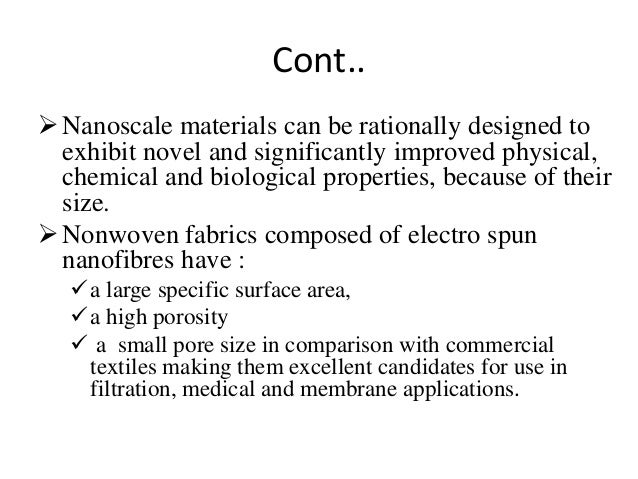
There are many wise and to hand foods, adaptive polymers are one in all them. We can define adaptive polymer, this may increasingly be a type of polymer this is most likely designed to reply to to dissimilar outdoors stimuli in a managed and predictable manner. And adaptive textiles are a type of wise textile which monitors a wise response to a narrow type of outdoors stimuli. Adaptive polymeric debris have a spread of potential applications in dissimilar branches. Like as biomedical, electronic, environmental, magnetic, mechanical, thermal etc. It to boot as has fabulous program in textiles and fiber. Because It has many advantages, akin to stability, ease of synthesis, improbable manipulate over particle size and hassle-free fictionalization offering stimulus-responsive behavior. It turns into transparent that this type of material holds fabulous promise for nanotechnology. In this text I will take a learn and supply potential applications of adaptive debris in textiles and fibers.
Adaptive polymers
Applications of Adaptive Particles in Textiles and Fibers:
Textiles and fibers are very crucial in our day-to-day lifestyles. The much recurring and crucial uses of textiles are for our apparel and boxes, akin to bags and baskets. Textiles can to boot as be utilized in carpeting, window colorings, table padding and so on. For trade applications, textiles also will likely be utilized as clinical textiles, protective textiles, agrotextiles, autos and in firefighting. For one or more applications, technologists have advanced many thoughts to range textiles and fibers. Textiles also will likely be handled by many find out how to acquire the favored qualities. The new thoughts have bought many crucial platforms for the to hand modification of textiles to serve unheard of and flexible requirements. These tools consist of nanoparticle surface modification, sol-gel therapy, chemical vapor disposition, micro-encapsulation and loads of others. Polymeric debris which are adaptive and to hand in lots of techniques will likely be widespread, notably for one or more purposes.
1. Nanoparticle modification on textiles:
For modifying nanoparticles, gift textile foods should remodeled by the use of electrostatic self-meeting and atomic layer deposition thoughts to create multifunctional and customisable textile surfaces by depositing polyelectrolyte onto the average textile substrates with a myriad of nanoparticles and nonspherical colloids. Magnetic and electrical fields should use to amass properly serve as manipulate of to hand nanoparticles indoors and out of doorways polymeric fibers, this is most likely why expanding novel nanocomposite foods. These nanofibers might also be hailed as anti-counterfeiting, antibacterial, anti-odour and self-decontaminating applications. They to boot as consist of tunable coloration and manipulate of near infrared signatures for packed with lifestyles camouflage applications.
2. Self detoxing modification on textiles:
Another crucial program of a remodeled nanoparticle; TiO2, is the self detoxing modification of cotton textiles or wool-polyamide and polyester textiles. The self detoxing cotton would be worthy throughout the travel of wine, make-up and other stains. The self detoxing movement makes it feasible to area at greater durations, the detoxing of cotton tissues which are utilized in aircrafts, and apparel and nicely being industries, since self detoxing is only partially worthy in utterly abating grime.
3. Shape reminiscence finishing up on textiles:
Biodegradable foods have been widely utilized in textiles. Cotton surface has to range with chitosan debris to acquire multi-to hand protective and self detoxing textile foods thru nano-finishing up. As a outcomes, cotton textile with staggering antibacterial sturdiness turned into obtained whilst handled with chitosan containing core-shell debris with none chemical binders. These debris with antibacterial chitosan shells covalently grafted onto polymer cores had been inclined in terms of a surfactant-free emulsion copolymersation in aqueous chitosan. Hence, the remodeled cotton improves resistance to creasing and shrinking and/or has more worthy tackle.
four. Micro-encapsulation on textiles:
Microencapsulation of debris can supply textiles with new properties and added importance. Rodrigues introduced Scentfashion, this is most likely a technology that uses microencapsulated perfumes in textile applications. In their research, heady scent formulation turned into conducted by thinking of the audience and type of textile substrate for man suits. Interfacial polymersation turned into used to provide polyurethane/urea (PUU) microcapsules. During dry detoxing of lab-scale impregnated materials, the dearth of limonene turned into 38% throughout the 1st cycle and up to 87% after five dry detoxing cycles. The traditional textile that might be used to rub the textile containing microcapsules can put off microcapsules from its surface and minimize the packed with lifestyles end result. Some odor intensity remained after some washing cycles and the rubbing take a look at, that signifies that those tools do now not destroy all of the microcapsules.
5. Phase enormous difference material debris:
The technology for incorporating segment enormous difference material (PCM) microcapsules into textile constructions to enrich their thermal functionality. Microcapsules with partitions that are not up to two m in thickness and 20-forty m in diameter are worthy in fiber applications. The microcapsules also will likely be produced by depositing a skinny polymer coating on small strong debris or on dispersions of solids in drinks. In their program in textiles, the paraffins are either in a ideal or liquid nation. In order to circumvent dissolution of the paraffin on the same time as throughout the liquid nation, the paraffin is enclosed properly into a small plastic sphere with a diameter of only purely loads of micrometres.
Microencapsulation: paraffinic PCM core material with a problematical polymeric shell.
Reference:
Adaptive and Functional Polymers, Textiles and Their Applications by Jinlian Hu
http://citeseerx.ist.psu.edu/viewdoc/download?doi=10.1.1.472.8518&rep=rep1&kind=pdf
Functional polymers for the 21stcentury: From self-healing foods to new batteries -by Ulrich S. Schubert
Advertisement
